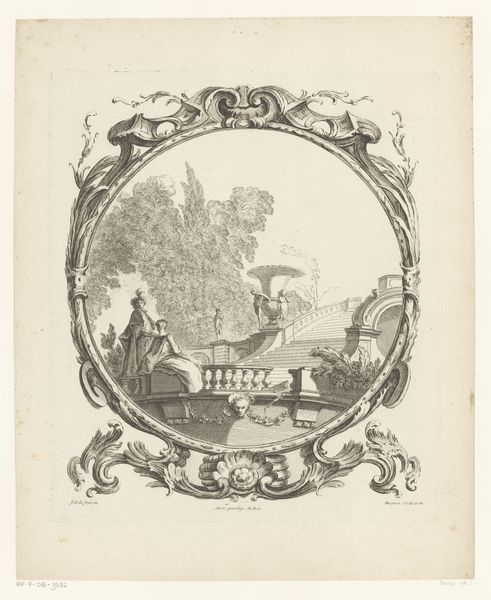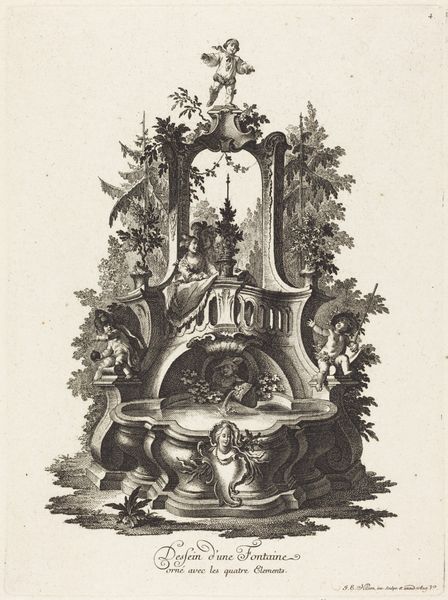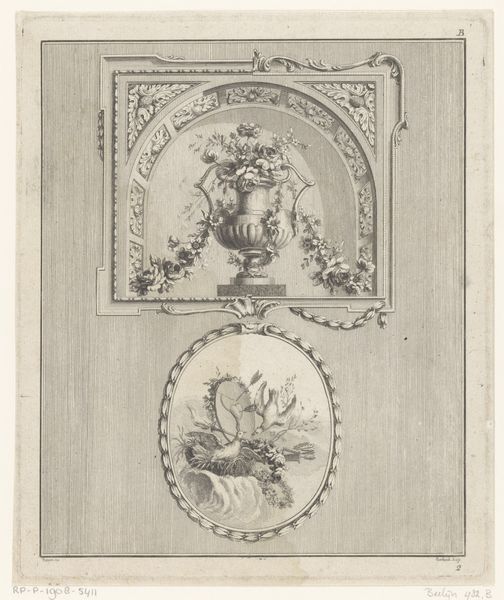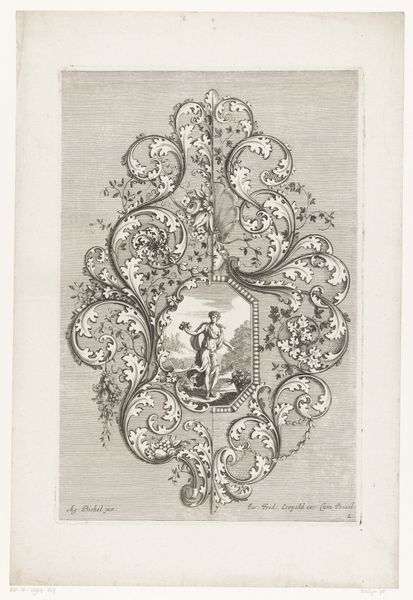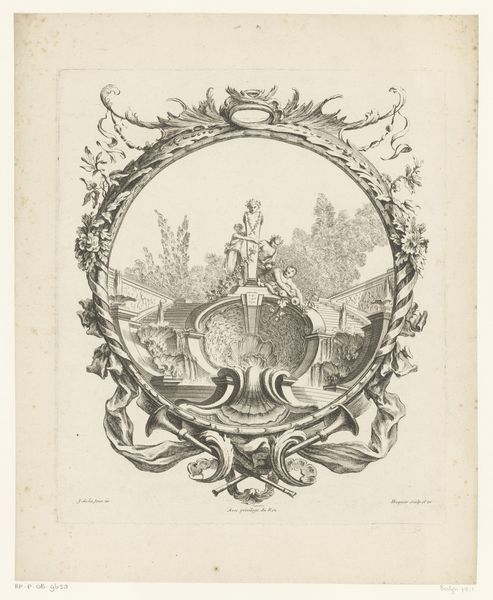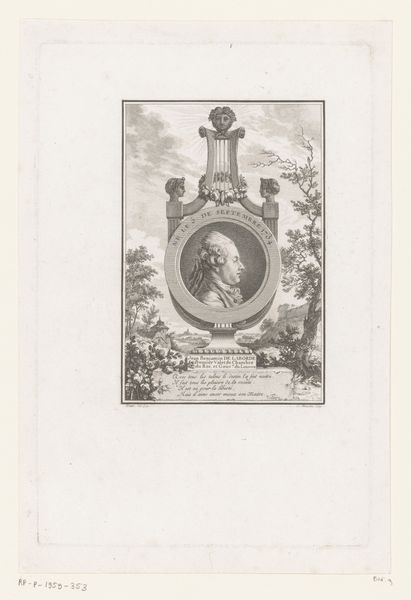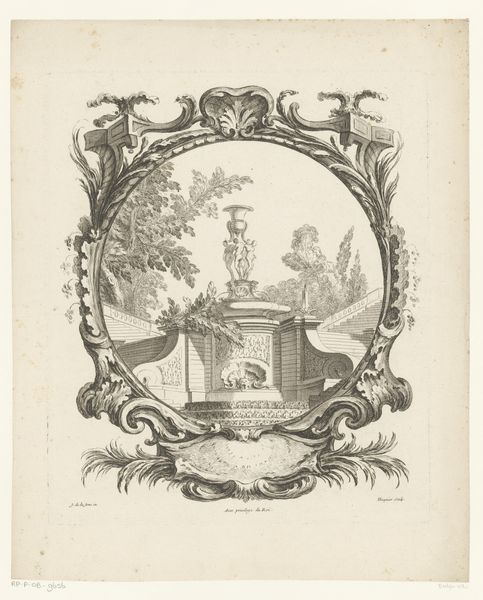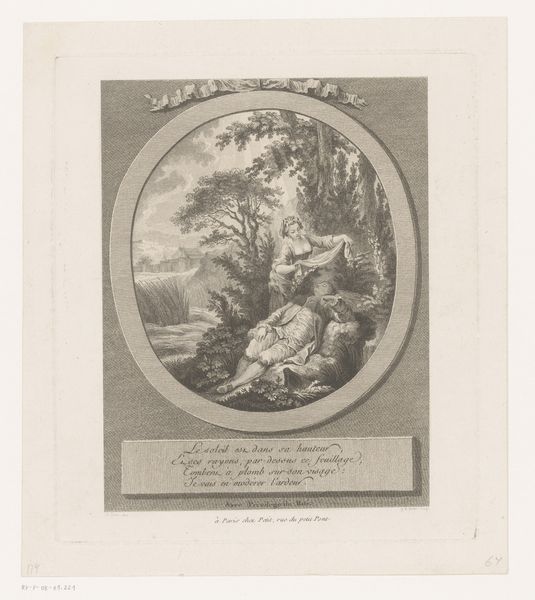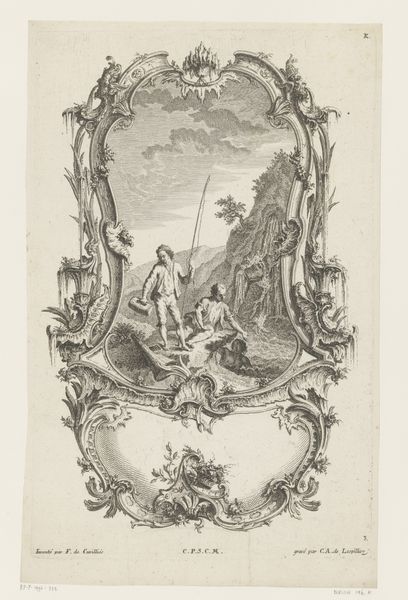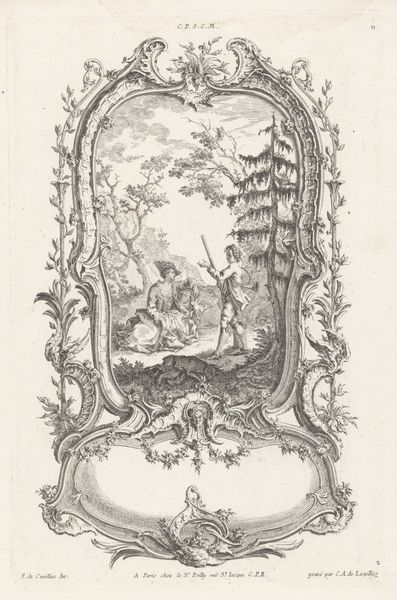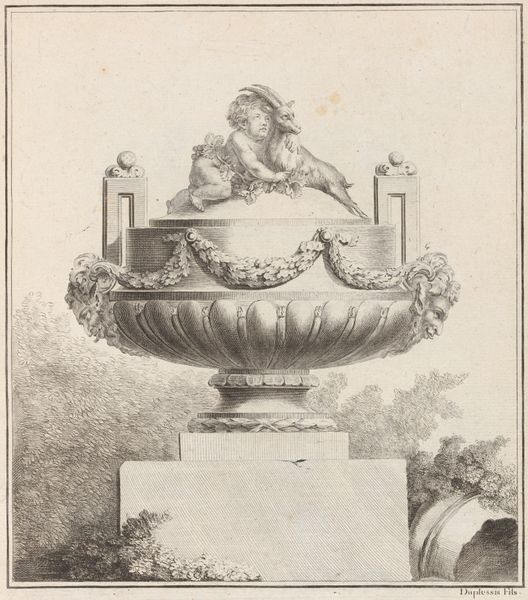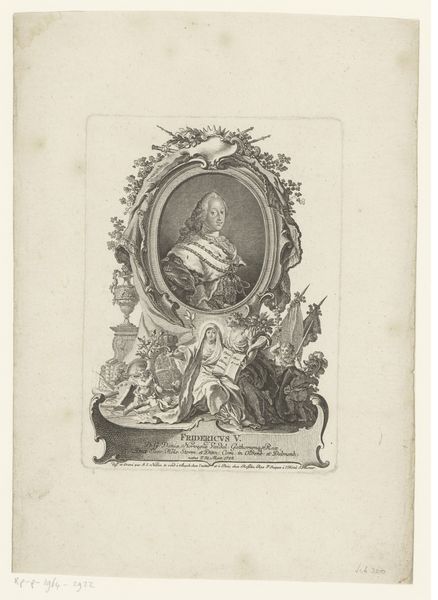
Twee vrouwen eren de drie gratiën met bloemen en muziek 1793
0:00
0:00
danielnikolauschodowiecki
Rijksmuseum
print, engraving
#
neoclacissism
#
allegory
# print
#
old engraving style
#
history-painting
#
engraving
Dimensions: height 140 mm, width 88 mm
Copyright: Rijks Museum: Open Domain
Curator: Daniel Nikolaus Chodowiecki's engraving, "Twee vrouwen eren de drie gratiën met bloemen en muziek," or "Two women honouring the Three Graces with flowers and music", produced in 1793, presents a fascinating look into late 18th-century Neoclassical ideals. Editor: Immediately, the careful, almost scientific rendering of figures strikes me. It’s quite reserved and emotionally restrained, with these women paying tribute to this statue of intertwined figures in this very carefully designed space. Curator: Precisely. The controlled line work of the engraving medium mirrors the Neoclassical fascination with order and rationality, particularly visible when considering the status and wealth afforded to art production during the Age of Enlightenment and revolutionary period in Europe. The printing press democratized visual ideas while maintaining very strict visual hierarchies and aesthetics. Editor: Yes, and the symbol of the Three Graces themselves, embodying beauty, grace, and joy. Notice how they're always depicted together? This speaks to a powerful sense of collective identity, reinforced through shared cultural ideals. The women presenting flowers and music enhance this impression with their reverence for it, while the overall classical framework implies a shared history and an appeal to the "ancient wisdom." Curator: The printmaking process itself becomes a symbol of accessibility. Each impression—made by the artist—serves to expand its visual reach. The availability of printed images in this time frame allowed people to consume cultural values far beyond the physical location of any one artwork. Editor: Absolutely. I can't help but see the echoes of these archetypes reverberating even today, consider how intertwined images of beauty remain, how social ideals connect. The engraving, therefore, isn’t just an aesthetic object but a container of collective cultural memory. Curator: So, when observing art forms, we must also understand that labor and technological availability plays an equal part in influencing artistic values, social perceptions, and visual representations. Editor: True, seeing them side by side gives rise to a richer awareness of their significance. I feel as though a whole dialogue on how symbols shape identity across art history might emerge from this.
Comments
No comments
Be the first to comment and join the conversation on the ultimate creative platform.
